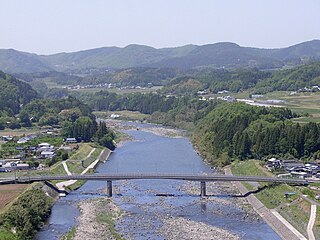
The Ōno River is a river that originates in Ōita Prefecture, Japan. After running through the southern and central portions of Ōita Prefecture, it runs through the eastern part of Kumamoto Prefecture and the northern part of Miyazaki Prefecture.
This page lists Japan-related articles with romanized titles beginning with the letter A. For names of people, please list by surname. Please also ignore particles when listing articles.
This page lists Japan-related articles with romanized titles beginning with the letter H. For names of people, please list by surname. Please also ignore particles when listing articles.
This page lists Japan-related articles with romanized titles beginning with the letter K. For names of people, please list by surname. Please also ignore particles when listing articles.
This page lists Japan-related articles with romanized titles beginning with the letter M. For names of people, please list by surname. Please also ignore particles when listing articles.
This page lists Japan-related articles with romanized titles beginning with the letter N. For names of people, please list by surname. Please also ignore particles when listing articles.
This page lists Japan-related articles with romanized titles beginning with the letter O. For names of people, please list by surname. Please also ignore particles when listing articles.
This page lists Japan-related articles with romanized titles beginning with the letter S. For names of people, please list by surname. Please also ignore particles when listing articles.
This page lists Japan-related articles with romanized titles beginning with the letter T. For names of people, please list by surname. Please also ignore articles when listing articles.
This page lists Japan-related articles with romanized titles beginning with the letters Y–Z. For names of people, please list by surname. Please also ignore particles when listing articles.
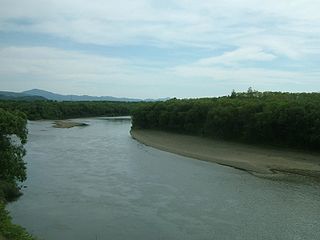
The Teshio River is a river in Hokkaidō, Japan. At 256 kilometres (159 mi), it is the second-longest river on the island and the fourth-longest in the country. A Class A river, the Teshio is the northernmost major river in Japan, and has been designated Hokkaidō Heritage. Matsuura Takeshirō is said to have come up with the name "Hokkaidō" during his exploration of the river's interior.
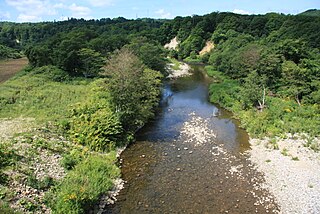
The Shiribeshi-Toshibetsu River is a Class A river in Hokkaidō, Japan. It flows through Hiyama District, and empties into the Sea of Japan.

The Watarase River is a major river in the northern Kantō region of Japan. A tributary of the Tone River, it is 106.7 kilometres (66.3 mi) in length and drains an area of 2,621 square kilometres (1,012 sq mi). Its source is at Mount Sukai on the boundary of the city of Nikkō in Tochigi Prefecture and it empties into the Tone River at the boundary of the city of Koga in Ibaraki Prefecture and the city of Kazo in Saitama Prefecture. It is classed as a First-class river by the Japanese government.
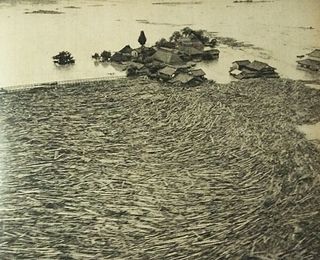
The 1953 North Kyushu flood was a flood which hit Northern Kyushu, Japan in June 1953. The flood was caused by cloudbursts and prolonged rain from the Meiyu rain front which dropped 1,000 mm of rain over Mount Aso and Mount Hiko. This downpour resulted in the overflow of many of the surrounding rivers, such as the Chikugo River.

Koyoshi River is a river in Akita Prefecture, Japan. It originates from Mount Chōkai, where the border of Akita Prefecture and Yamagata Prefecture is located, and flows through Yurihonjō and finally into Sea of Japan. The headstream of the river is called Chōkai River. It has the third largest drainage area of the class A rivers that flow through Akita Prefecture, after Omono River and Yoneshiro River.
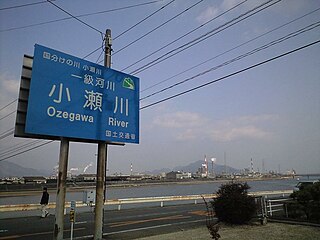
The Oze River is a river in Hiroshima Prefecture and Yamaguchi Prefecture, Japan. The river forms part of the border between the two prefectures, which used to be the border between former Suō Province and Aki Province. It is also known as Kono River (木野川).
Each modern Japanese prefecture has a unique flag, most often a bicolour geometric highly stylised design (mon), often incorporating the characters of the Japanese writing system and resembling minimalistic company logos. A distinct feature of these flags is that they use a palette of colours not usually found in flags, including orange, purple, aquamarine and brown.






